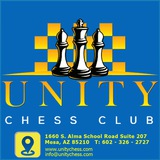Let's just hear what Lilienthal had to say about his decision: 'Black has to bring his rook from h8 into the game. But castling is dangerous: White is all geared up for an attack on the kingside. Because of this, I decided to send my king in the other direction.'
Sounds sensible enough, does it not? Besides, you can observe that the position is closed and as a result, the king will be safe on c7. When Black opens up the b-file with . . . b5 -b4, the king will even be able to assist here, controlling some important entry squares.
Sounds sensible enough, does it not? Besides, you can observe that the position is closed and as a result, the king will be safe on c7. When Black opens up the b-file with . . . b5 -b4, the king will even be able to assist here, controlling some important entry squares.
White's position is still good, although Lilienthal went on to win a complicated game against the former World Champ!
Here is a modern-day example. The same pawn structure as in the first example, but this time the white king is on d2. Perhaps this makes it easier for White to advance his kingside pawns, though at the same time his own king will be more vulnerable when Black succeeds in breaking through on the queenside.
Following in the footsteps of Lilienthal! The king moves towards a safer place, aiming to connect the rooks before the action starts on the queenside.
18.g4 Bd7 19.Rhg1 b4 20.axb4 axb4 21.Rgb1 Kd8 22.cxb4 Rxb4 23.Qc3 Rxb1 24.Rxb1 Kc7
Here it is very probable that the battle will be fought on the kingside. Therefore Kamsky takes appropriate measures.
Thus Black has completed his artificial castling. In the meantime White is trying to create play on the queenside.
